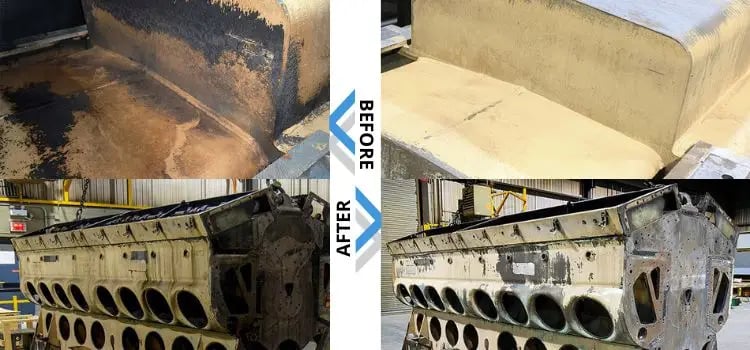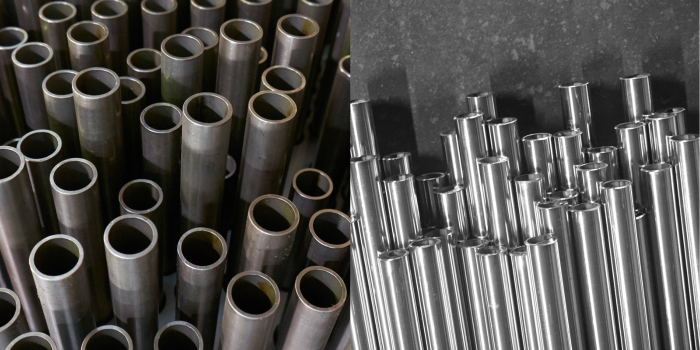Cleaning engine components like cylinder heads and engine blocks is one of the most critical tasks that repair shops undertake. These components are vital to an engine's performance and efficiency, and any contaminants or buildup can significantly affect their functioning. Therefore, proper Cleaning of these components is essential to ensure that they are free of contaminants and perform at their best.
Cylinder heads and engine blocks are exposed to harsh operating conditions. This can cause a buildup of grime, carbon deposits, and other contaminants, affecting engine performance and reliability. Some of the most common challenges that operators face when cleaning these components include:
REMOVING CARBON DEPOSITS
Carbon deposits are a significant challenge when cleaning cylinder heads and engine blocks. They can accumulate in the combustion chambers and other areas of the engine, reducing performance and fuel efficiency.
FLUSHING OIL AND FUEL PASSAGES
Oil and fuel passages in cylinder heads and engine blocks can accumulate sludge and debris, causing engine damage and reducing performance. Flushing out these passages is essential to keep the engine functioning correctly. This can be achieved in aqueous parts washers. Special flushing adaptors can be attached to the head or engine block to divert flow directly to them.
REMOVING RUST AND CORROSION
Rust and corrosion are common problems in engine components, particularly cast iron ones. Rust can build up on the surface of these components, making it challenging to remove using traditional cleaning methods. Caustic and de-rusting chemistries can remove light rust. Mechanical processes like sandblasting or grinding may be necessary if there are more significant amounts of rust that need to be removed.
There are several methods for cleaning cylinder heads and engine blocks, each with its own advantages and disadvantages. Here are some of the most common methods:
Solvent Cleaning involves using solvents to dissolve and remove contaminants from the surfaces of the components. It is effective for removing organic materials, but it can be messy and time-consuming. It is also not environmentally friendly, as the solvents can be hazardous if not disposed of properly and may harm the personnel.
Abrasive Blasting involves using a high-pressure stream of abrasive material to clean the surfaces of the components. This method is effective for removing rust, scale, and other challenging deposits, but it may damage the surfaces of the components if not done correctly.
Ultrasonic Cleaning involves using high-frequency sound waves to create tiny cavitation bubbles in a cleaning solution. The bubbles implode, creating a scrubbing action that removes contaminants from the surfaces of the components. Ultrasonic Cleaning is effective for removing small particles and contaminants in certain areas, but the bubbles have trouble forming in complex geometries within the casting, rendering the technology less effective.
Aqueous Parts Washers use a water-based cleaning solution and heat to remove contaminants from the surfaces of the components. This method effectively removes a wide range of contaminants, including oil, grease, and carbon deposits. Aqueous parts washers are also environmentally friendly, as they do not use solvents and produce minimal waste. Benefits of Aqueous Parts Washers.
Aqueous parts washers are excellent tools for cleaning cylinder heads and engine blocks. These machines wash and rinse engine components thoroughly. Some of the benefits of using aqueous parts washers include:
Faster Cleaning Cycles
Aqueous parts washers have a faster cleaning cycle than traditional solvent-based cleaners, reducing downtime for operators and repair shops. These machines use high-pressure jets, 150+ psi, and water-based detergents to clean engine components quickly and efficiently.
Environmentally Friendly
Aqueous parts washers are safer and more environmentally friendly than solvent-based cleaners. Solvent-based cleaners contain harmful chemicals that can harm human health and the environment. Aqueous parts washers use water-based detergents, which are safe and non-toxic.
Improved Cleaning Performance
Aqueous parts washers provide superior cleaning performance compared to traditional solvent-based cleaners. These machines use high-pressure jets and water-based detergents to remove even the most challenging contaminants, including carbon deposits, oil, and grease. When feasible, parts can be rotated automatically to ensure better cleaning and drying results. This is especially important to get the solution in hard-to-reach places and properly flush out internal passages.
In conclusion, cleaning cylinder heads and engine blocks is an essential task that requires specialized tools and techniques. Aqueous parts washers are an excellent tool for cleaning these components, providing superior cleaning performance, faster cleaning cycles, and increased safety and environmental benefits. Operators and repair shops should take the time to learn about the best cleaning methods and invest in the proper equipment to ensure that their engines are in top condition. By taking these steps, they can provide their customers with reliable and efficient engines that will last years.
Schedule a free consultation with the PROCECO team today.



